Inside the Budapest Escape Room That Started the Worldwide Craze
Why Hungarians are so good at puzzles—from Houdini and Rubik’s Cubes to escape rooms.
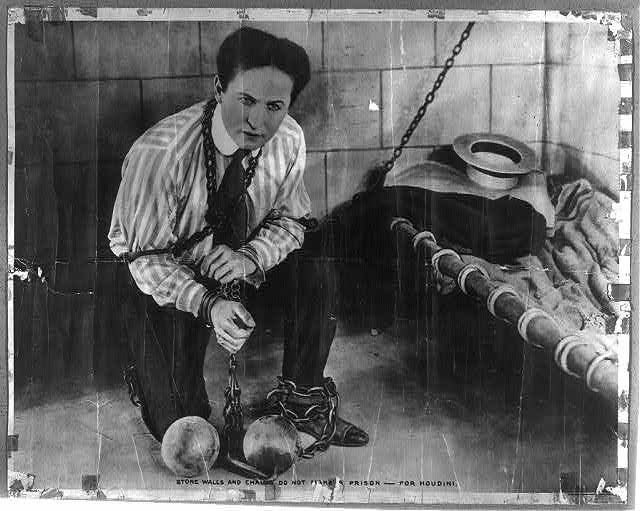
Harry Houdini before an escape. (Photo: Library of Congress/LC-USZ62-53798)
In a crumbling basement in the gritty part of Budapest’s VIII District, the clock was already ticking. Various clues lay scattered around the subterranean chamber, and we had an hour to gather clues and solve the interconnected problems to get out of this Rubik’s Cube-themed room. A series of logic puzzles, some hidden, led us on a trail to keys, codes and even more puzzles that opened up even more challenges. After the first two minutes of panic and confusion, being locked in the room with four Hungarian girls I had never met before, the adrenaline kicked in and my problem-solving synapses snapped into action.
Parapark is no ordinary room escape game—it’s the first of its kind in the world. In the summer of 2011, Attila Gyurkovics, the man behind the concept, opened the doors to the interactive game in Budapest, not knowing that this interactive game would cause an intellectual epidemic that would infect the whole world.
“Of course, my inspiration partly came from computer games,” Gyurkovics says from the crumbling, street art-covered courtyard of Bujdosó Kert, one of Budapest’s many “ruin bars,” whose basement houses three of his games. “I played a lot of hidden object games and I saw how it hooked people. But the idea to create real-life room escape games came from wanting to apply this idea to small group setting.”
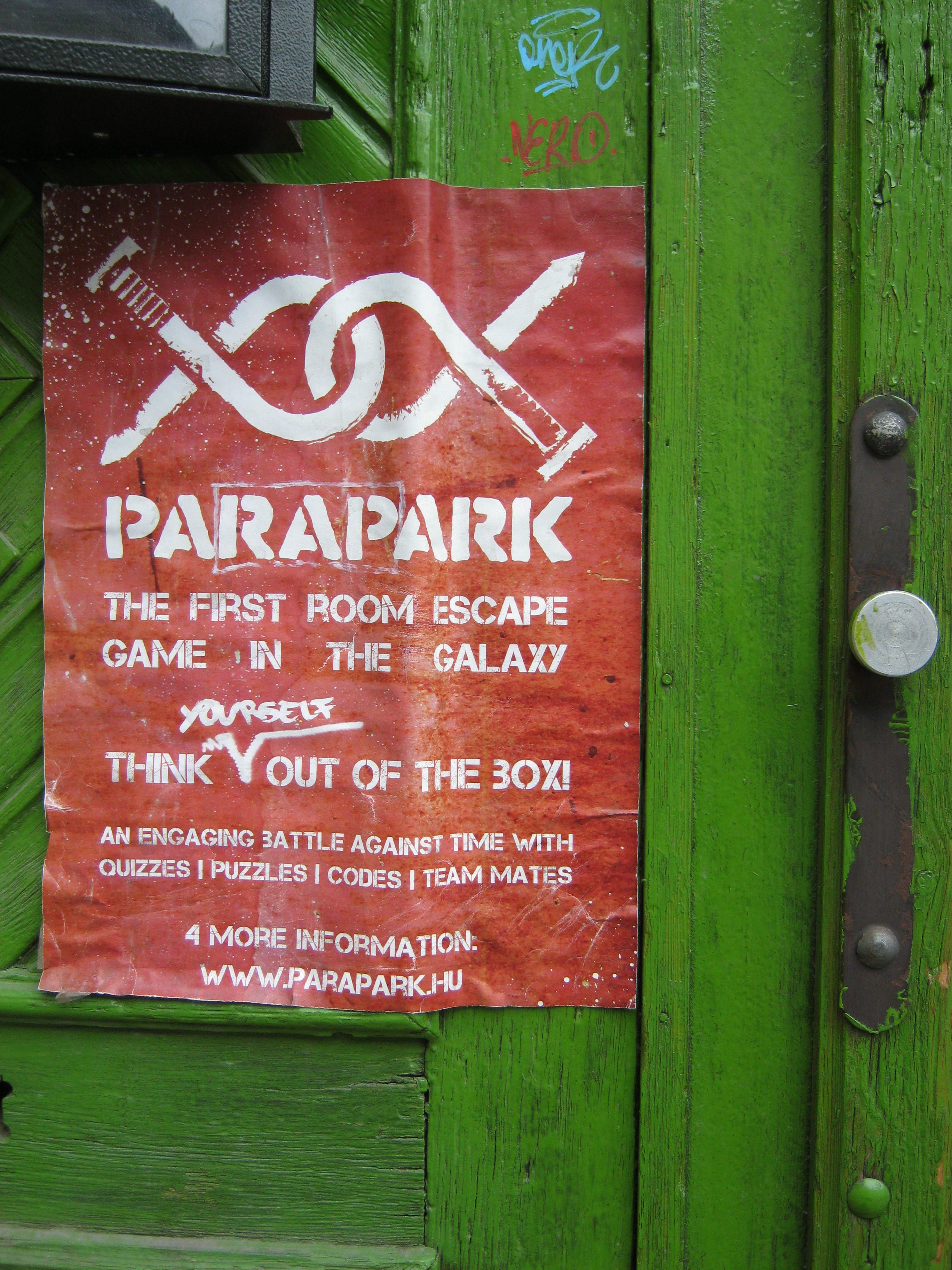
Parapark in Budapest, first live room escape game of its kind. (Photo: Courtesy of Parapark)
Indeed, scurrying around the basement solving puzzles offers a nostalgic throwback to classic hidden object games—your brain reacts somewhat similarly— with players experiencing a feeling of leaving or forgetting the outside world for a while. Research even backs this up: when you’re thrown into a locked room with a team and a challenge, a focused mental state called “Flow” kicks in. First identified by Hungarian psychologist Mihály Csíkszenmihályi, the Flow Effect is common during game work, and in optimal conditions, players move into a state of hyper-concentration and creativity.
“I was really inspired by Mihály Csíkszenmihályi’s concept of ‘Flow’,” says Gyurkovics. “I felt that by bringing those games to life, with those elements, would be something that would offer people a great experience.”
In an escape room, flow occurs when a group undertakes a difficult but not impossible challenge, and is given clear goals and feedback about how they’re doing. Of course, being so immersed in an objective can lead to a distortion of time—something that becomes very apparent when suddenly you have just one minute left to open the safe to reach the final key to get out.
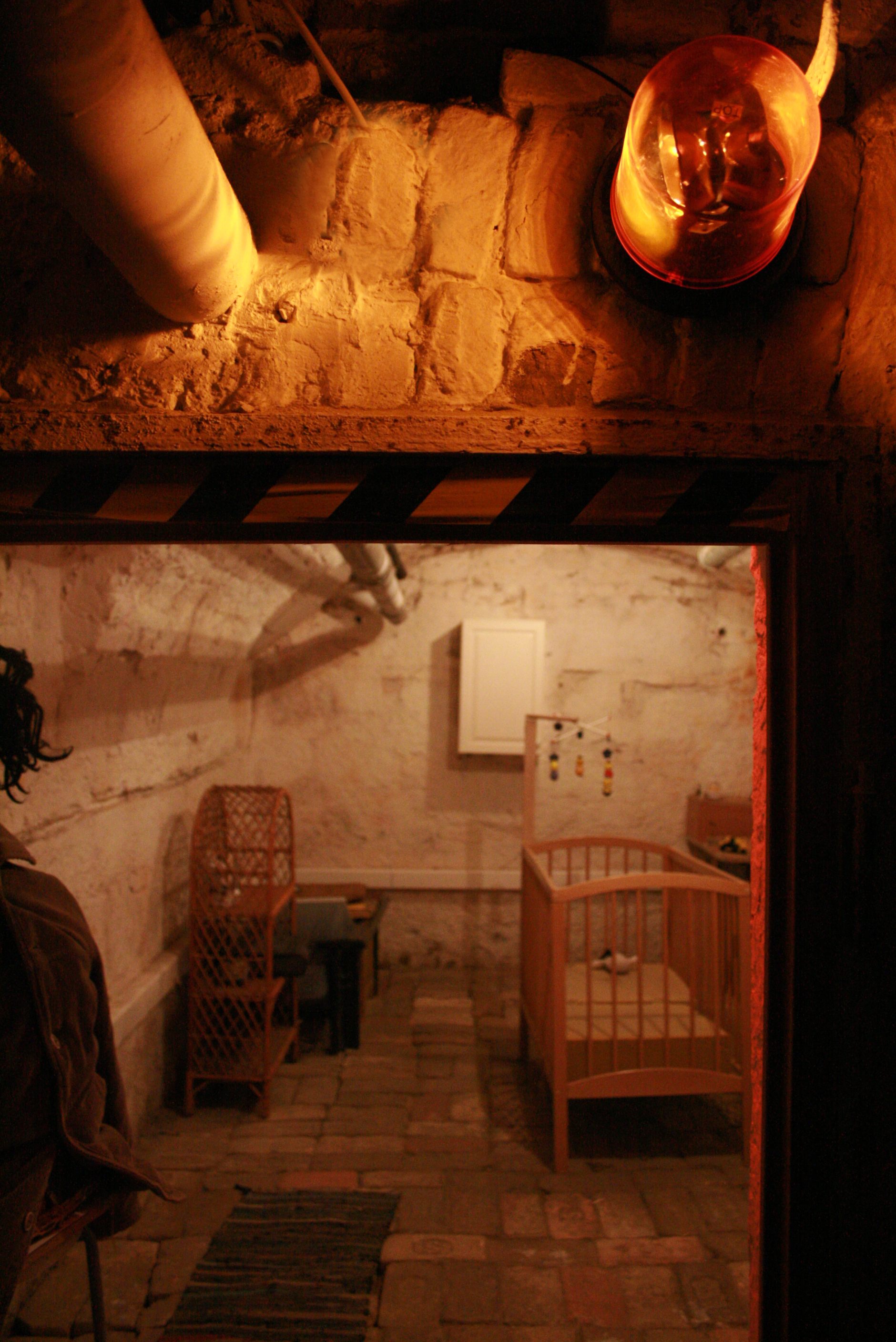
Many of Budapest’s room escape games are set up in formerly abandoned basements. (Photo: Courtesy of Parapark)
People are trying to break out of locked rooms the world over. In Budapest alone there are dozens of live escape games spread across the city, and you’ll also find break-out games from Sydney to Los Angeles that follow the Parapark concept.
It might seem like the Hungarian origin of room escape games is merely coincidental, but if you look more closely, a distinctive pattern emerges, linking the country and the worldwide craze it introduced to a robust lineage of creative problem solvers. For a country about the same size as Indiana, with a unique, almost indecipherable language largely unrelated to others in Europe, Hungarians have managed to populate history with creative inventions in science and design, from the Rubik’s Cube to the ballpoint pen. One can think of the very first Escape Room as arising from various Hungarian influences carried along the wires by Tivadar Puskás’s first telephone exchange into a new, exciting idea.
Csíkszentmihályi, whose TED talk on creativity and the flow state has now been viewed 3.4 million times, is the most cited influence, but Ernő Rubik, inventor of the famous Rubik’s Cube, is another obvious connection. Just like the puzzle piece we found behind a panel, the professor of architecture who became famous for his iconic multi-colored puzzle cube fits neatly into the Hungarian oeuvre of problem solving, but he’s not the only one. One of the world’s most famous escape artists also came from Budapest.

Across the river and up on the Castle Hill in the I District, there is another door requiring another riddle to open it. At the House of Houdini, if you can answer with the right magic number inspired by a deck of cards, the door opens up into a treasure chest that leads you into the complex world of Harry Houdini. The brand new House of Houdini museum, which opened in the summer of 2016, contains original props, documents, and memorabilia about the illusionist and escapologist. It all culminates with a live magic show.
But beyond the theatrics, what’s most interesting about the House of Houdini is its owner, David Merlini, a Hungarian-Italian escapologist, whose passion for the craft began when he chose locks and handcuffs over more conventional toys at the age of four. “I have wanted to be an escape artist since I was a child,” he says.
Merlini followed in the footsteps of his idol in his adult years, escaping live in front of an audience after being embedded in a concrete block and hurled into the Danube River. In between stunts like escaping from a burning pyre and being unfrozen from a block of ice by blowtorches after spending 33 hours locked in a refrigerator cell, he spent nearly two decades going to auctions and looking for pieces about Houdini.
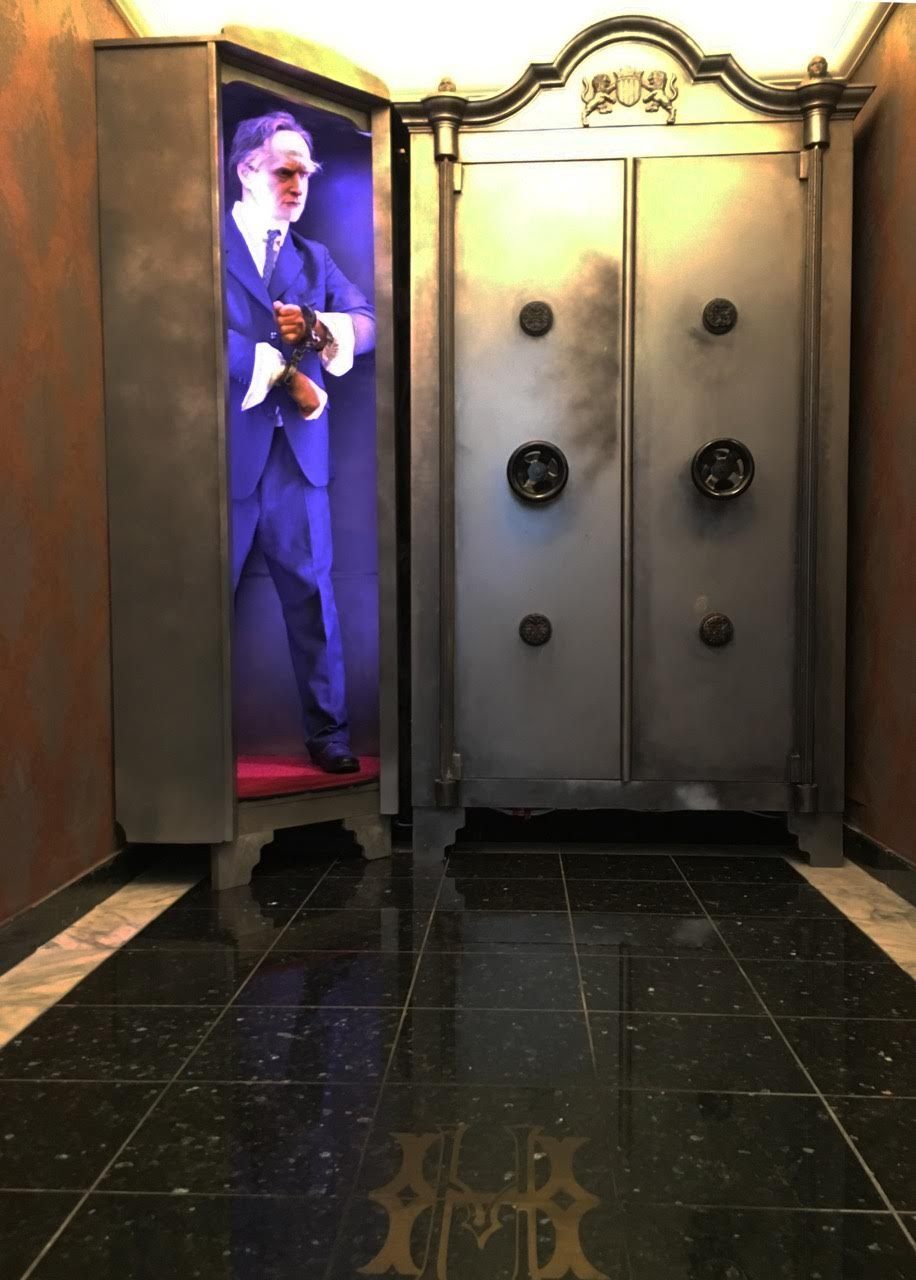
Can you answer the riddle to get through the secret door? (Photo: Courtesy of House of Houdini)
As Merlini’s collection grew, the idea of creating a dedicated museum in Budapest started to feel more and more logical. His years-long passion for collecting artifacts about Houdini, who was born Erik Weisz in 1874, manifested in a collection Merlini wanted to share with the public. Since Budapest was Houdini’s home town, it seemed appropriate to found the museum on local ground. The House of Houdini now works with the National Széchényi Library to unravel the myths and truths surrounding Houdini’s legacy.
“There is a common belief that Houdini was born in the United States, in Appleton, Wisconsin, but he was born in Budapest,” Merlini says. “This is actually documented.” Houdini’s first home was on Csengery utca (street), but “the Weisz family moved residence every two years before moving to America.”
Still a household name 90 years after his death, Houdini joins a slew of other 20th-century Hungarians heralded for their problem-solving prowess, including Rubik; László Biró, who invented the ballpoint pen; and 13 Nobel Prize winners.
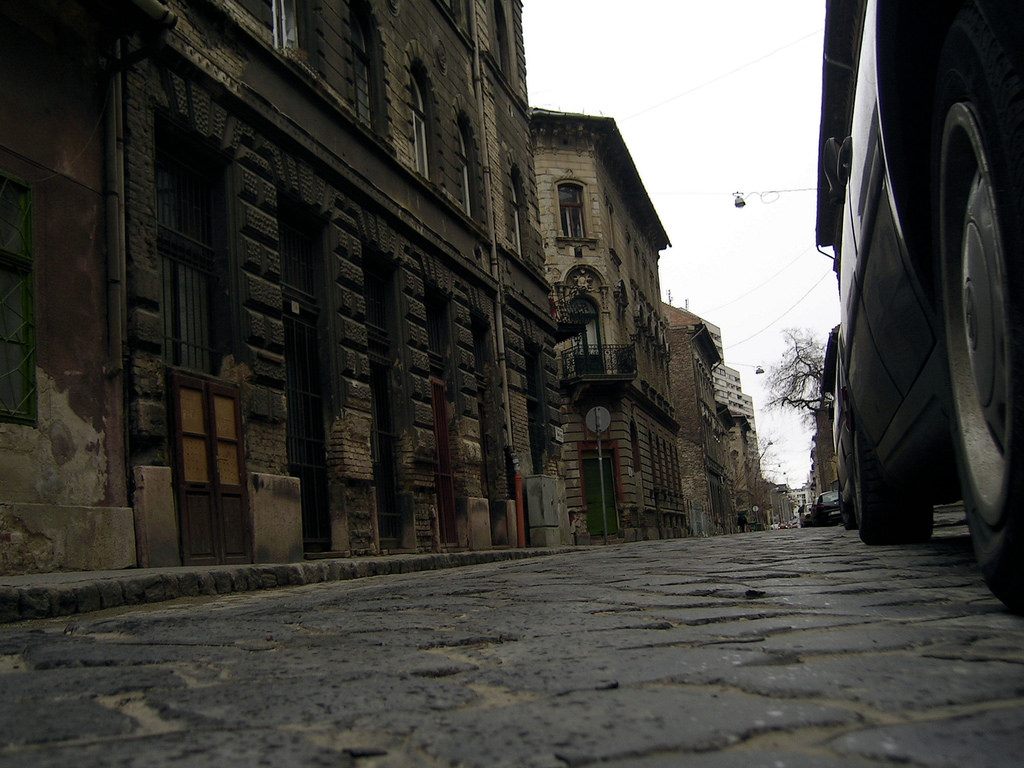
A street in Budapest’s VIII district, where Parapark is located. (Photo: tutu/CC BY-SA 2.0)
“It’s interesting how Hungary is such a small country, yet produced so many masterminds” and “people who think differently,” says Merlini.
“Perhaps there is something in our language, or way of thinking,” Gyurkovics wonders.
Either way, it’s hard to deny that cultural factors led to the creation of escape rooms. Whether it was the backdrop of Houdini or Rubik, or Csíkszentmihályi’s psychological theories, or even the many ruined spaces around Budapest that gave rise to ruin bars and escape games in the early 2000s, it seems Hungary provided the perfect starting point for live escape challenges.
Although Gyurkovics claims he was more inspired by computer games, it’s hard to imagine a better fusion of escapology and puzzle cubes than the room escape craze he ushered into being.

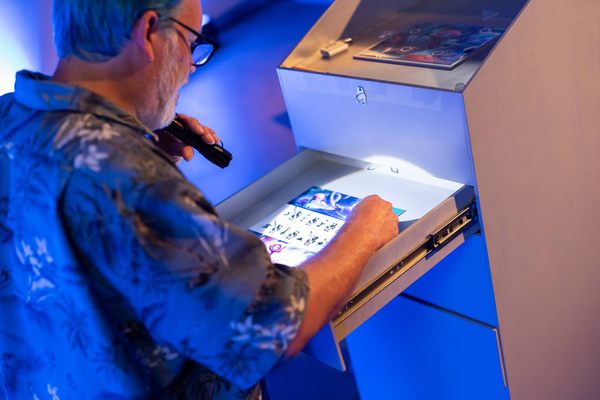






Follow us on Twitter to get the latest on the world's hidden wonders.
Like us on Facebook to get the latest on the world's hidden wonders.
Follow us on Twitter Like us on Facebook